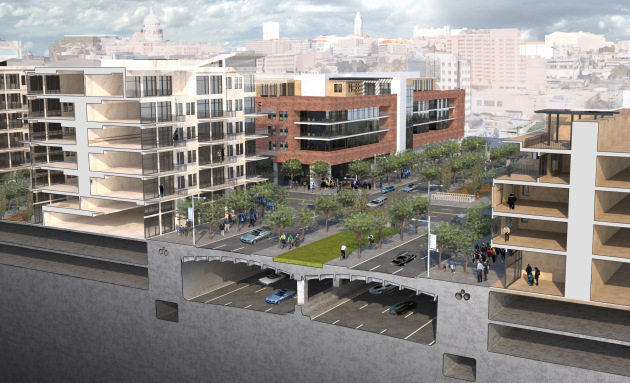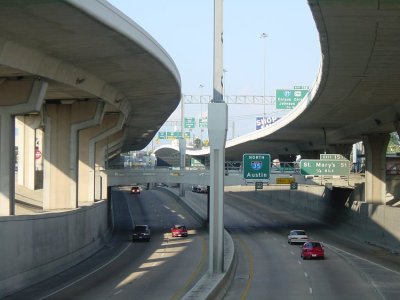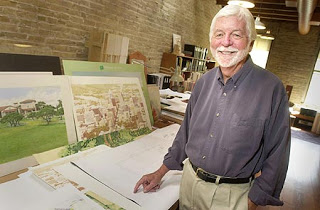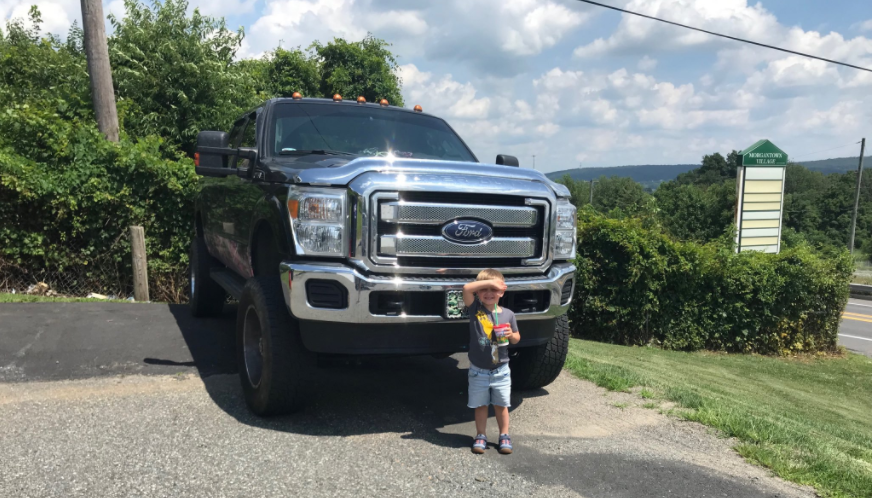
Since it was built about 50 years ago, Interstate 35 has been an enormous physical and psychological barrier through downtown Austin. Partly elevated, partly sunk, it's the dividing line between what locals refer to as "east Austin" and plain old Austin. It's also a major NAFTA trade corridor that carries 250,000 vehicles a day, and is considered one of the most congested freeways in the country.
I-35 is due for repair, and naturally TxDOT has proposed a traditional rebuilding and widening project. But an alternative proposal has emerged from the community calling for something radically different.

In Austin, the proposal is known as "cut and cap," and it would help bridge the divide without removing the freeway. The idea is to bury or "cut" the highway and "cap" it with an at-grade boulevard and mixed-use development. The $550 million concept is the brainchild of Austin architect Sinclair Black.
The plan would open up some 30 acres of valuable downtown land for walkable, mixed-use development, Black says. An analysis by his planning and architecture firm, Black + Vernooy, found that if the site were developed relatively intensively, it could support some $3.2 billion in development. About 7,000 people could live within the current right of way, he says, and it could accommodate some 2 million square feet of retail and restaurants. That development could return enough tax revenue to cover the costs of the project, he says.
Because the freeway is so widely used, tearing it down just didn't seem practical, Black said. The plan is partly inspired by a similar project in Dallas that capped the Woodall Rodgers Freeway. Now above the highway people play chess and ping-pong at the Klyde Warren Park, which opened last year. There are many other precedents, said Black, like Millennium Park in Chicago, which sits on top of rail yards.

"If TxDOT builds just another freeway using a bucket of tax money, it becomes just another recurring expense," said Black. "If they take our approach ... it becomes a recurring asset."
Black and his group, Reconnect Austin, have drawn together a coalition for the project, including environmental groups like the Sierra Club and a major development firm called Rida. It's a big tent that has "never, never" occurred until now, Black said.
Last month, the Austin City Council signaled its support, passing a resolution asking TxDOT to consider the cut-and-cap project along with a range of other options. TxDOT, to its credit, has agreed to consider it alongside three other traditional alternatives it has put forward. Black still thinks TxDOT doesn't want to cap the highway.
"They're desperate to leave ours out," he said. "But I don't think the community would stand for that."





